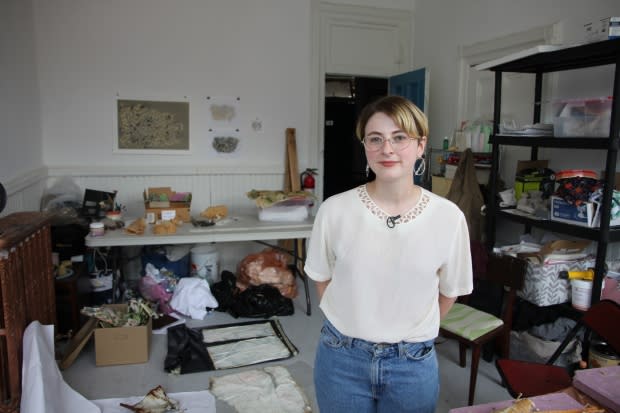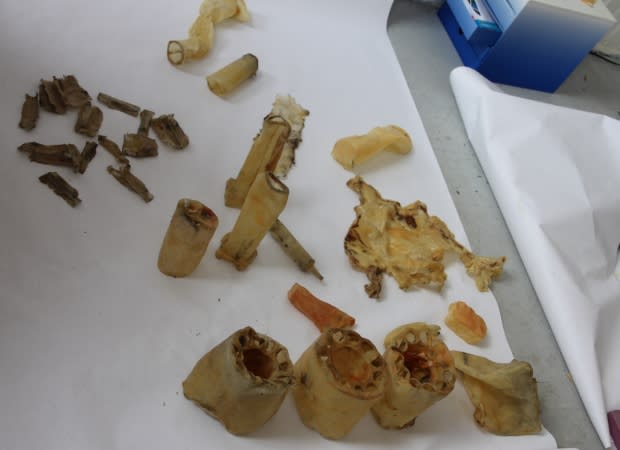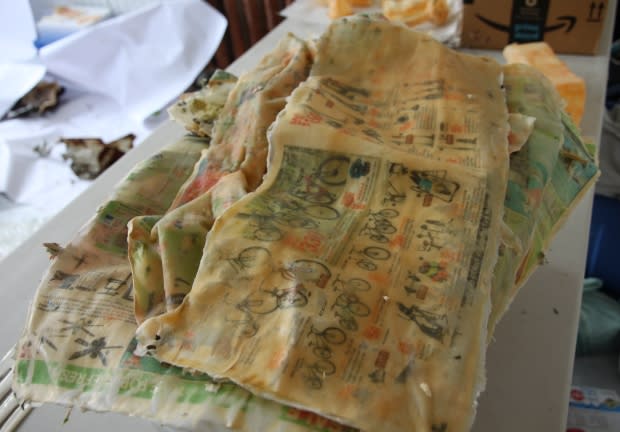Saint John artist creates sculpture out of found objects to challenge notions of trash

For the past year, KC Wilcox has been thinking about the afterlife of trash.
An artist who lives in Saint John's south end, Wilcox has been making regular trips to Tin Can Beach and collecting discarded objects she finds there.
Her recent haul includes fireworks left over from Canada Day, old newspapers, discarded pop cans and beer bottles.
It's all to create her new project, Shedding, in which she casts the objects in rubber latex.
"I'm thinking about where they may have come from before they became trash and what their lives were," she said.

"I'm kind of dealing with them on the stage where it's their afterlife and where they've ambiguously kind of become this unknown thing that we overlook."
She's hoping to challenge viewers to think about that notion of forgetting or discarding objects. Her project will be displayed on Friday in King's Square as part of the annual Third Shift art festival.
Wilcox's project is also exploring the relationship in Saint John between industry and the environment. That's why she chose Tin Can Beach as her focus.
"You can see a lot of where the landscape has been altered by industry and also evidence of environmental degradation," she said. "That's what originally kind of drew me to that site."

Wilcox chose to cast her objects in rubber latex because it keeps remnants of them when peeled off. Newspaper she cast bled ink into the rubber, Styrofoam left behind pills of white, and bricks left bits of dirt and rubble.
"I approach sculpture in the way a photographer might approach a photograph," she said. "I'm interested in creating something that almost touches the surface, that comes really close to the subject matter."

In order to make the casts, she brushes several layers of latex on the object. Depending on what she's casting, the object may need two layers or it may need 10.
The end result is a sand-coloured, floppy mould that looks like a shedded skin. Hence the name of the project, Shedding.
"I was thinking about the texture of the latex and how it looks a lot like skin," Wilcox said about why she chose the name. "It's very fleshy and it has this really soft quality to it."
Wilcox has cast around 100 objects and she'll be splitting them into four categories for display on Friday.
They range from the familiar to the unfamiliar — cans and bottles, household trash, industrial objects and trash with less structure such as tarps and bags. Those were the hardest to cast, she said.
But doing the work has also forced her to really think about trash.

"I feel like through working with this material and with the subject matter I become very much aware of the different types of trash that exist," she said. "I'm thinking about where they may have come from before they became trash and what their lives were."
She hopes viewers will come away from the project thinking about their relationship to trash as well.


